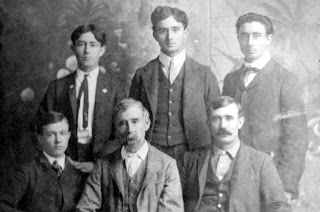 |
| Architectural Rendering of Louisiana Downs C. 1970s Bossier Chamber of Commerce Collection: 1998.047.211 |
Before April arrived, the Louisiana Racing Commission voted to renew the operating permit for Sawyer Downs, which inevitably was revoked by Governor McKeithen two days later after firing and replacing every member of the Louisiana Racing Commission that voted in favor of the permit. Despite the current opposition, Sawyer Downs president, John Wolcott, announced that they would carry on with their plans for the racetrack to be in operation by April of 1973. Meanwhile, a bill to allow for a local option, where the residents of Bossier Parish could vote for or against a pari-mutuel racetrack, was signed by Governor Edwin Edwards on June 20, 1972.
July 25, 1972, Sawyer Downs once again applied for the pari-mutuel racing permit and approval for racing dates for the fall of 1973 and the spring of 1974 which were quickly approved, pending the local option election. Within hours of this approval, the Bossier Parish Police Jury approved a resolution to hold an option election on August 19. The voters approved the operation of the controversial Sawyer Downs. Having removed many of their obstacles, Sawyer Downs planned to begin construction by the end of the year with grander plans for the facility than before.
1973 rolled around, and the construction had not begun because the racetrack organization had decided that the current location, approximately one mile from the Bossier Parish Courthouse was too inaccessible for the volume of traffic expected. They proposed a new site on Highway 80 (the current location of Louisiana Downs) and the Louisiana Racing Commission gave them a hearing on the changes. In the hearing the Louisiana Racing Commission not only approved the location change, but they also approved changing the name form Sawyer Downs to Louisiana Downs.
President John Wolcott announced the changes and the date for the groundbreaking ceremony which would be on February 20, 1973. Louisiana Downs finally opened for operation on October 30, 1974. On opening day Louisiana Downs drew a crowd of over 12,585 people, many of whom were from out of town, mostly Texas and Arkansas. Their inaugural meet was an 8-race event, with the first race at 1:05 pm.
 |
| Louisiana Downs Grandstand 1974 Bossier Chamber of Commerce Collection: 1998.047.220 |
In 1978, Vincent J. Bartimo, the president and general manager of Louisiana Downs, asked the Sawyer family permission to name a race worth $50,000 and up the Earl Sawyer Memorial Purse, stating “I think if it wasn’t for him this track would not be here today.” The Earl Sawyer Memorial Purse would become a permanent fixture of Louisiana Downs.
To learn more about Bossier Parish history come to the Bossier Parish Libraries History Center, 2206 Beckett St., Bossier City.
By: Amy Robertson
































